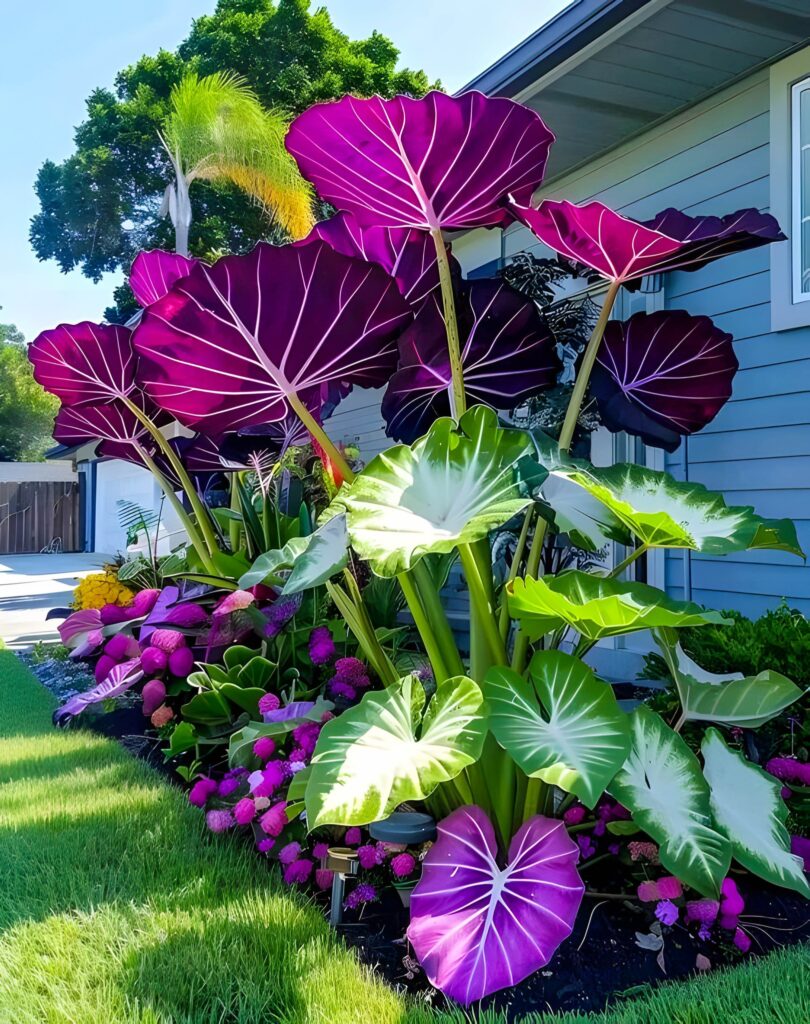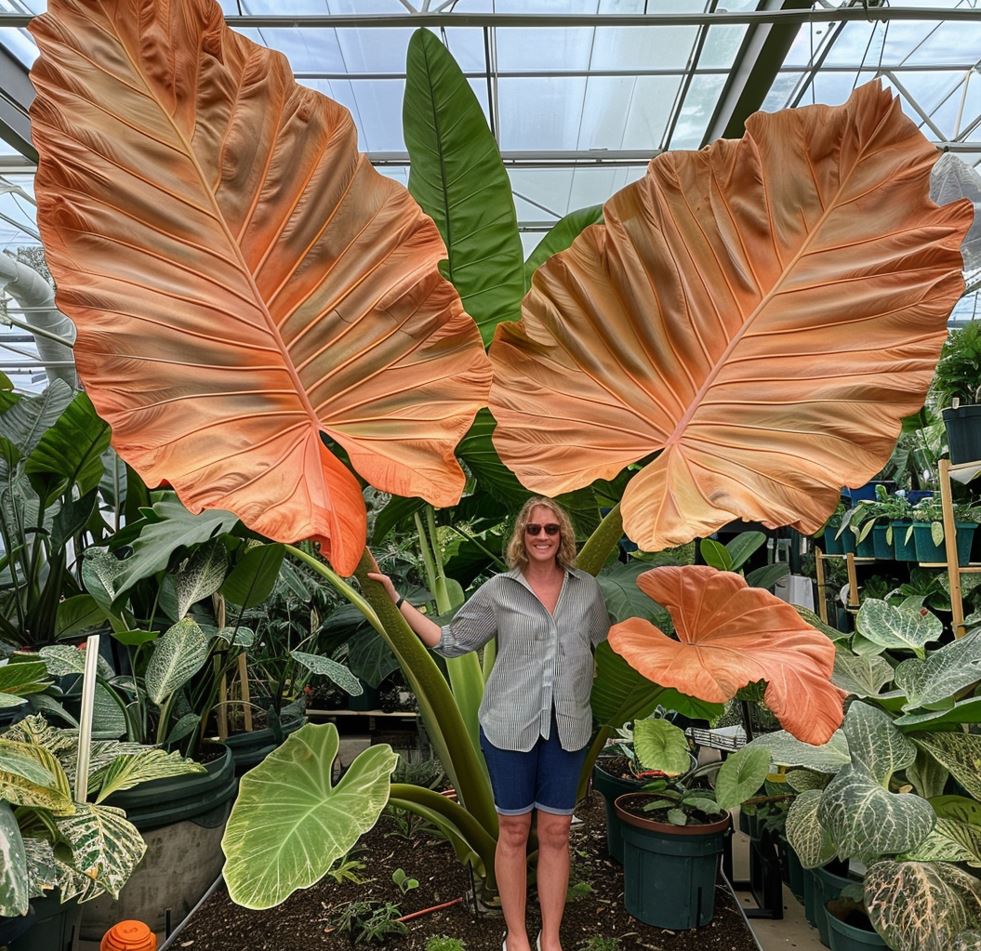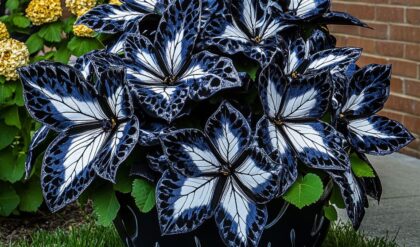The Elephant Ear plant, scientifically known as Colocasia, is a striking addition to gardens and landscapes, captivating enthusiasts with its massive, heart-shaped leaves and lush tropical appearance. Originating from regions like Southeast Asia, these plants are not just visually appealing; they also hold cultural significance and practical applications. Let’s explore the diverse aspects of this extraordinary plant, drawing insights from various sources.

The Varieties of Elephant Ears
Colocasia, along with its relatives Alocasia and Xanthosoma, showcases an array of varieties that delight gardeners with their unique features. From the classic Colocasia esculenta, commonly known as Taro, to the spectacularly patterned and variably colored types, each brings its own charm to the garden.
Heart of the Jungle Variety
The Heart of the Jungle® variety, renowned for its deep green foliage, not only enhances aesthetics but also thrives in various environments, making it suitable for both indoor and outdoor settings. This variety’s lush, heart-shaped leaves create a bold and captivating visual impact, making it a standout choice for those seeking to add a tropical flair to their gardens.
Taro (Colocasia esculenta)
Colocasia esculenta, commonly known as Taro, is a staple food source in many tropical regions. Its tuberous roots, rich in carbohydrates, are utilized in dishes around the world, showcasing how this plant bridges the gap between ornamental beauty and sustenance.

Alocasia and Xanthosoma Varieties
Beyond the classic Colocasia esculenta, the Elephant Ear family also includes the Alocasia and Xanthosoma varieties, each with its own unique visual characteristics. Alocasia plants often feature iridescent, arrow-shaped leaves, while Xanthosoma varieties boast a more rounded, heart-shaped foliage. These diverse attributes allow gardeners to explore a wide range of options when incorporating Elephant Ear plants into their landscapes.
Growing Conditions and Care Tips
Understanding the specific growing conditions for Elephant Ear plants is crucial for optimal growth. These plants flourish in warm, humid climates with plenty of sunlight, reflecting their tropical origins. They require well-draining soil rich in organic matter, mimicking their natural habitat where they often grow near water bodies.
Sunlight and Temperature Requirements
Elephant Ear plants thrive in areas that receive ample sunlight, with a preference for partial to full sun exposure. In regions with cooler climates, these plants may be cultivated as annuals, while in tropical or subtropical regions, they can be grown as perennials.
Soil and Moisture Needs
When cultivating these beautiful specimens, regular watering and fertilization can significantly enhance their growth. Elephant Ear plants require consistently moist, well-draining soil that is rich in organic matter. This necessity for moisture might evoke the image of nurturing a delicate ecosystem, where the right balance of water and nutrients fosters life.
Fertilization and Overwintering
To ensure the optimal growth and vigor of Elephant Ear plants, regular fertilization is recommended, especially during the active growing season. The use of a balanced, nutrient-rich fertilizer can help these plants thrive and maintain their impressive size and lush foliage.

In colder climates, Elephant Ear plants may need to be overwintered to protect them from frost and harsh winter conditions. This might involve digging up the tubers or rhizomes and storing them in a cool, dry place until the following growing season.
Cultural Significance and Uses
Beyond their aesthetic appeal, Elephant Ear plants have deep-rooted connections to various cultures, especially in culinary traditions. The Colocasia esculenta variety is not only a garden favorite but also serves as a staple food source in many tropical regions.
Culinary Traditions
The tuberous roots of Colocasia esculenta, also known as Taro, are a staple ingredient in many traditional dishes around the world. These starchy tubers can be boiled, roasted, or used in a variety of culinary preparations, showcasing the versatility of this plant.
Traditional Crafts and Decorative Arts
The sheer size of the Elephant Ear leaves has led to their use in traditional crafts and decorative arts within indigenous communities. Vendors in vibrant market scenes might display intricate baskets woven from the sturdy fibers of these leaves, symbolizing sustainability and resourcefulness.
Medicinal and Symbolic Uses
In some cultures, Elephant Ear plants have also been attributed with medicinal properties and hold symbolic significance. Certain parts of the plant may be used in traditional remedies, while the large, distinctive leaves have been incorporated into cultural rituals and celebrations.
Environmental Perspectives and Implications
The cultivation of Elephant Ear plants also presents interesting environmental implications. As they thrive in wet conditions, they can play a role in managing local water systems, potentially acting as natural filters that improve water quality.
Water Management and Filtration
Elephant Ear plants’ affinity for moisture and their ability to thrive in wetland environments make them potential candidates for natural water management and filtration systems. Their dense foliage and extensive root systems can help to absorb and filter water, potentially improving overall water quality in areas where they are cultivated.
Ecological Considerations
However, it’s essential to consider the ecological balance when introducing Elephant Ear plants, or any non-native species, into different environments. Improper management or uncontrolled spread could disrupt local flora and fauna, creating competition for resources and potentially altering the delicate balance of the ecosystem.
Responsible Gardening Practices
This emphasizes the importance of responsible gardening practices and awareness of ecological impacts when integrating such plants into different environments. Gardeners and horticulturists must carefully consider the potential consequences of introducing Elephant Ear plants, ensuring their cultivation aligns with sustainable and environmentally-conscious principles.
Conclusion
The journey of the Elephant Ear plant, from its exotic origins to its modern-day applications, embodies not just beauty, but complexity and interconnectedness within our ecosystems. Through careful cultivation, we can celebrate this remarkable species while honoring its multifaceted contributions to culture, cuisine, and the environment. As we delve deeper into the world of Elephant Ear plants, we uncover a tapestry of stories that showcase the intricate relationships between humans, nature, and the countless wonders that our planet has to offer.



